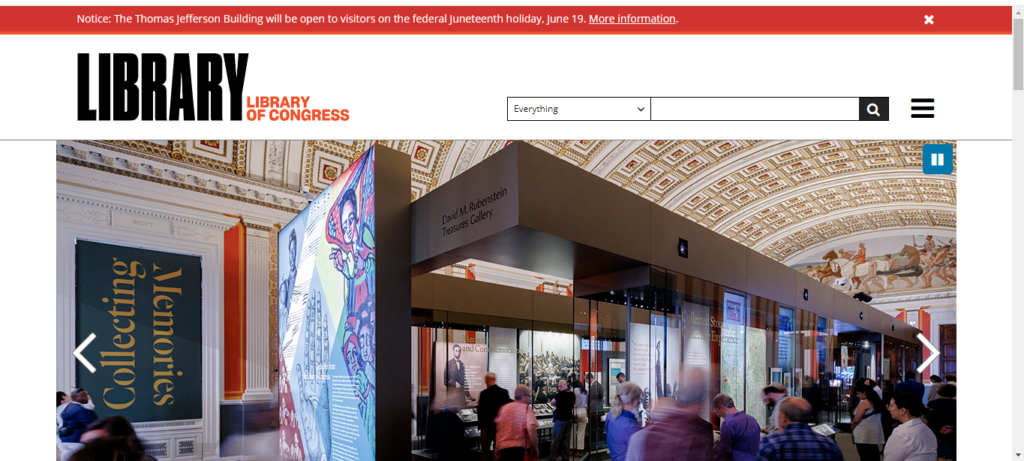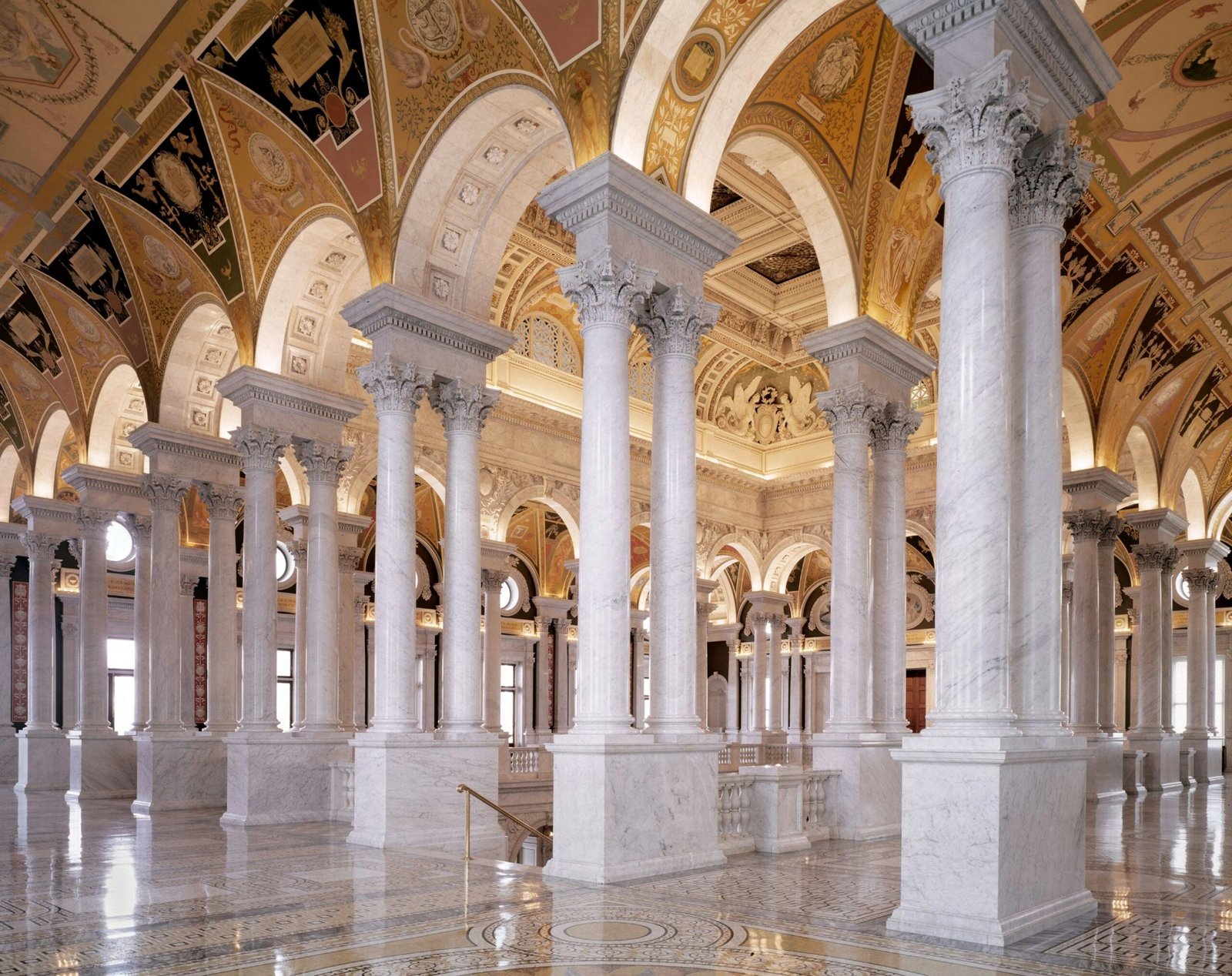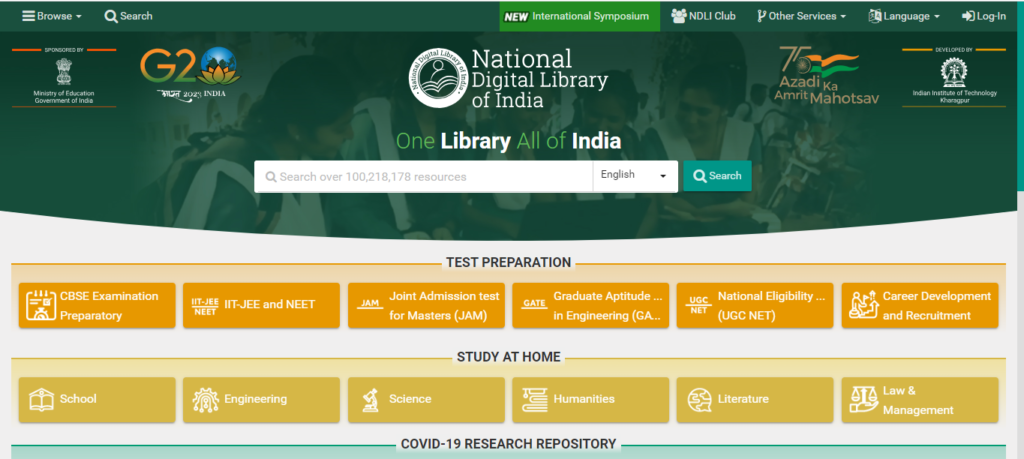A Historical Overview of the Library of Congress
The Library of Congress, America’s oldest federal cultural institution, was established in 1800, marking the beginning of an enduring journey in the preservation and dissemination of knowledge. Commissioned by President John Adams, the library was initially conceived as a resource for Congress, housing a modest collection of 740 books and three maps. This early repository was located in the United States Capitol and served as a foundational pillar for legislative research and decision-making.

However, the fledgling institution faced a significant setback in 1814 when British troops set fire to the Capitol during the War of 1812, resulting in the complete destruction of the original collection. This devastating event could have marked the end of the Library of Congress, but it instead became a turning point that would shape its future trajectory.
In the aftermath of the fire, Thomas Jefferson, the third President of the United States, played a crucial role in the library’s resurgence. A man of profound literary and intellectual pursuits, Jefferson offered to sell his personal library to Congress. Comprising approximately 6,487 volumes, Jefferson’s collection was one of the most comprehensive in America at the time, covering a vast array of subjects including philosophy, science, literature, and law.
Congress accepted Jefferson’s offer in 1815, and his extensive collection became the cornerstone of the reborn Library of Congress. Jefferson’s vision was to create an institution that encompassed the full spectrum of human knowledge, a philosophy that has continued to guide the library’s growth and development. His donation not only restored the library’s holdings but also significantly expanded its scope, establishing a precedent for future acquisitions and collections.
Today, the Library of Congress stands as a testament to the resilience and foresight of its early advocates. From its humble beginnings and the ashes of adversity, it has grown into the world’s largest library, a beacon of knowledge and culture. The historical journey from its founding to the present day underscores the library’s enduring commitment to preserving the intellectual heritage of the nation and the world.
Architectural Marvels: The Thomas Jefferson Building
The Thomas Jefferson Building, an iconic structure within the Library of Congress, stands as a testament to architectural grandeur and artistic opulence. Completed in 1897, this Beaux-Arts masterpiece is adorned with an array of luxurious materials, including marble, bronze, gold, and mahogany. The building’s exterior, characterized by its classical design elements, hints at the splendor that awaits within its walls.
Upon entering the Thomas Jefferson Building, visitors are immediately struck by the magnificence of the Great Hall. This awe-inspiring space features a series of marble columns that support a vaulted ceiling, intricately decorated with gilded plasterwork and vibrant murals. The grand staircase, a focal point of the Great Hall, sweeps upwards in a manner reminiscent of the opulent Paris Opera House, inviting visitors to explore further.
One of the most distinctive aspects of the Thomas Jefferson Building is the artistic contributions of over 50 American artists. These talented individuals were commissioned to create hand-carved sculptures, paintings, and mosaics that enhance the building’s interior. The result is a rich tapestry of artistic expressions that range from allegorical figures to intricate decorative motifs, each adding to the building’s overall sense of splendor.
Beyond the Great Hall, the Thomas Jefferson Building houses several other noteworthy spaces, each meticulously designed to reflect the grandeur of the institution. The Main Reading Room, for instance, is a circular space crowned by a majestic dome, its walls lined with columns and alcoves that provide a serene environment for study and reflection. Similarly, the Southwest Gallery features a series of murals that depict significant moments in American history, further enriching the building’s cultural and educational value.
The architectural and artistic achievements of the Thomas Jefferson Building make it a true marvel, embodying the spirit of the Library of Congress as a beacon of knowledge, culture, and beauty. Its blend of classical design and artistic innovation continues to inspire and captivate all who visit.
Treasures of Knowledge: Collections and Exhibitions
The Library of Congress, the world’s largest library, boasts an extensive and diverse collection that spans over 173 million items. This vast repository of knowledge includes an array of books, manuscripts, maps, photographs, and other significant artifacts that reflect the rich tapestry of human history and culture. Among its most notable treasures is the Gutenberg Bible, dating back to circa 1455, one of the earliest major books printed using movable type. This artifact represents a pivotal point in the history of printing and dissemination of knowledge.
Another priceless item housed within the Library is Thomas Jefferson’s original draft of the Declaration of Independence. This document, penned by Jefferson himself, offers a profound insight into the founding principles of the United States and stands as a testament to the nation’s enduring quest for liberty and justice. Additionally, the Library of Congress holds one of the earliest known baseball cards, featuring John M. Ward of the New York Giants, from 1887. This artifact is not only a piece of sports history but also a reflection of America’s cultural evolution and its love for the game of baseball.
The Library of Congress also hosts a variety of major exhibitions in the galleries near the Great Hall. These exhibitions showcase the library’s treasures and provide visitors with an immersive experience into America’s historical and cultural heritage. Each exhibition is meticulously curated to highlight different aspects of the library’s extensive collections, offering a unique window into the past. These exhibits are instrumental in educating the public and fostering a deeper appreciation for the library’s role in preserving and promoting knowledge.
Through its unparalleled collections and thoughtfully curated exhibitions, the Library of Congress continues to serve as a beacon of knowledge and a guardian of America’s historical and cultural legacy, inviting visitors to embark on a journey through time and discovery.
Visitor Experience: Navigating the World’s Largest Library
Visiting the Library of Congress is an awe-inspiring experience that immerses you in a world where architecture, art, and history converge. As the largest library in the world, the Library of Congress boasts an extensive collection that captures the imagination of every visitor. The grandeur of its design is immediately apparent upon entering, with its opulent halls adorned with intricate mosaics, murals, and sculptures that pay homage to the richness of human knowledge and creativity.
The architectural splendor of the library is epitomized by the domed reading room, a must-see area that leaves a lasting impression. This iconic space, with its high ceilings and panoramic views of the library’s collections, symbolizes the vastness of the knowledge housed within these walls. It’s a place where scholars and visitors alike can engage with the myriad of resources available, from rare manuscripts to modern digital archives.
Navigating the Library of Congress requires a blend of curiosity and planning. To make the most of your visit, it is advisable to start with a guided tour, which offers insightful information about the library’s history, architecture, and key collections. The knowledgeable guides provide context that enhances the appreciation of the library’s treasures. Additionally, practical tools such as interactive maps and mobile apps are available to help visitors explore the library’s expansive layout efficiently.
The sheer scale of the Library of Congress’s holdings is staggering. With shelves that, if lined up, would stretch from the outskirts of Paris to the border of Czechia, the library is home to an unparalleled array of artifacts. These include everything from ancient Chinese woodblock prints and early American documents to contemporary literary works and multimedia collections. Each item in the collection is a testament to the library’s mission to preserve and provide access to the world’s knowledge.
Whether you are a scholar, a history enthusiast, or a casual visitor, the Library of Congress offers a unique and enriching experience. Its vast collections, architectural beauty, and artistic decorations create an environment that not only celebrates the past but also inspires future generations to explore, learn, and innovate.













